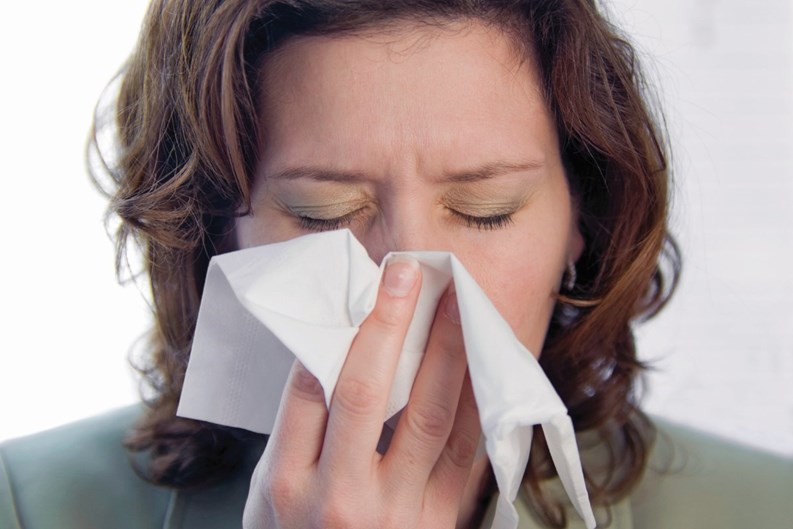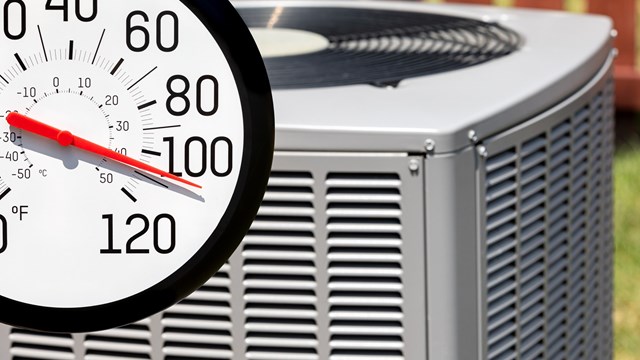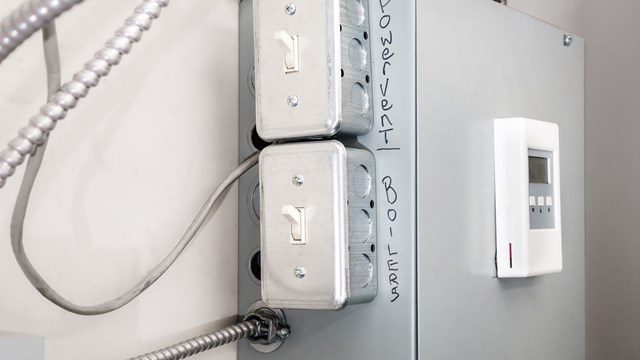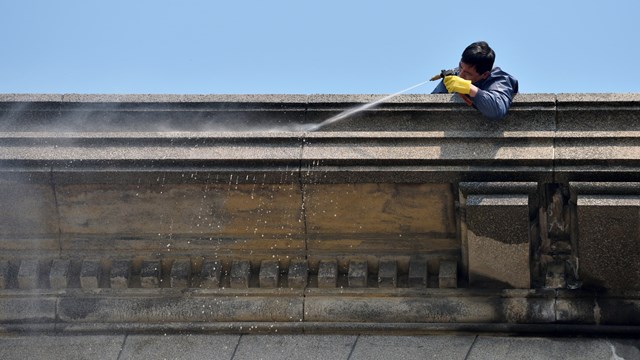“Be it ever so humble,” the song goes, “there’s no place like home.” There really is no place like home, but what if the air you were breathing in your “home sweet home” was actually making you and your family very sick?
We all want to believe that our homeis our safe haven, but unfortunately, the Environmental Protection Agency has classified poor indoor air quality as one of the top five most urgent public health risks. The EPA has also stated that the level of air pollution inside your home can actually be higher than outside your home!
Air quality issues became a concern way back in the 1970s when structures – including condominium buildings –were sealed up like Tupperware containers to help conserve energy.
The problem with sealing up a home or building too well without proper ventilation is that toxic pollutants —such as mold, tobacco smoke, pest control products, dust, fireplace emissions, formaldehyde from furniture andcabinets and more – linger inside, build up and have no way to escape. Energy conservation started to be a big issue 30-plus years ago, but the side effects from poor ventilation weren’t even considered then.
Such side effects will depend on the person’s sensitivities, but can include short-term symptoms such as eye irritations, headaches, dizziness and fatigue, and long-term effects such as respiratory diseases, heart disease and even cancers.
Sources of Indoor Air Pollution
In condominium buildings, indoor air pollution can come from the sources mentioned above, but can also come from stoves, furnaces, space heaters and even from nice Mrs. Jones next door. “In buildings, the air problems can come from neighboring units below you or even from the garage or elevator shaft,” says Jeffrey May, from Tyngsborough, Massachusetts, author of “Healthy Home Tips: A Workbook for Detecting, Diagnosing and Eliminating Pesky Pests, Stinky Stenches, Musty Mold and Other Aggravating Home Problems.” May explains that the garage or elevator shaft can send up such toxins as carbon monoxide, fuel odors, soot, and fumes from neighboring remodeling projects.
You may not realize it, but too much and too little moisture in the home can also become a contaminant. Is your home too stuffy? If there’s too much humidity, it’s a breeding groundfor bacteria. A building that is not adequately ventilated can cause mold and mildew to form, which can be a huge problem in units without bathroom windows or exhaust fans. You can also find mold where there are water leaks or in walls where moist air condenses on cool surfaces.
Mold is a fungi that can reproduce and cause headaches and/or fever, coughing, wheezing, runny nose/sinusproblems, flu-like symptoms, skin rashes, diarrhea, hypersensitivity, asthma, and other health problems.
VOCs
Although Rebecca Kurz lives in Nashville, Tennessee, she understands how poor indoor air quality can cause a family to suffer. Within 15 minutes of bringing new furniture into her home, Kurz and her husband began to suffer from watery eyes, coughing and sore throats.
“You could smell something coming from the desk,” says Kurz, whose husband recognized the formaldehyde odor and researched the symptoms of exposure on the Internet. The couple shut the door to the room the furniture was in (it wasn’t possible to return the furniture) and purchased air filtersto clean the air of the odors.
Formaldehyde is a VOC, or volatile organic compound, that comes from such products as particle board, plywood, adhesives, paints, varnishes, carpets and more that are made with materials that off-gas. You might be familiar with it as the solution that is used when embalming a deceased person. These toxins then release into the air and, with no adequate ventilation in the unit or building, have nowhere to go but linger in the air.
The off-gassing of this toxic chemical can continue for years after you’ve installed the product inside your home.
“The industry was talking about the side effects of formaldehyde 20 years ago, but while it was discussed by some, others pooh-poohed it,” says Lewis Buchner, the chief executive officer of EcoTimber flooring. “Then about seven years ago, more studies showed that there were serious health effects from formaldehyde that could cause breathing problems and that it was potentially carcinogenic.” Some of the side effects from formaldehyde include asthma, allergies, headaches and other serious conditions, such as cancer.
Today, many manufacturers are developing VOC-free flooring, made without urea-formaldehyde and whichmeet environmental standards for indoor air quality. There are also low- and no-VOC paints.
If you’re interested in other eco-friendly, VOC-free flooring (verify with your board to make certain that you can replace your flooring), check with the Forest Stewardship Council, says Leah Ingram, founder of The Lean Green Family blog (www.suddenlyfrugal.blogspot.com).
The Forest Stewardship Council, Ingram says, “certifies that paper and wood products do not come from virgin forest or that the wood that's used is sustainable, in that it is replanted as necessary.”
Carpets and Furniture
You might like the feeling of a plush rug under your feet, especially on a cold winter day, but carpets – and the adhesives used to secure them —are also known to emit VOCs into the air. In addition, carpeting is considered a dust and chemical trap that can cause eye, nose, throat and skin irritation, headaches, shortness of breath, fatigueand other symptoms.
In 1992, the Carpet & Rug Institute launched its Green Label progam that tests carpets, cushions and adhesives to identify those that are very low VOC. Today, it’s also possible to purchase recycled carpets, which have fewer emissions than regular carpeting.
There are several steps that property managers and unit owners can take to improve indoor air quality. First, for the health of their residents, boards should make greener choices each time they need to upgrade or replace a product. Newly-constructed buildingscan incorporate better indoor air quality features into the design.
For example, one new residential building, the Macallen Building in South Boston, features filtered fresh air through ducts into every unit. The cooling tower uses an ultrasonic-based technique to control bacteria, avoiding the standard practice of adding toxic chemicals. Additionally, there is no useof chlorofluorocarbon (CFC) gases, considered an ozone-depleting agent commonly used in HVAC systems, and copper plumbing replaces the controversial use of polyvinyl chloride (PVC) piping, a potential carcinogen according to the EPA.
Designed by Burt Hill, the buildingalso incorporates significant amounts of natural and recycled materials as well as nontoxic paints, coatings, adhesives and sealants which minimize the amount of volatile organic compounds and result in higher indoor air quality.
Proper Ventilation
Buildings should also have a well-working ventilation system that allowsgood air in, and bad air out. As air naturally leaks out of the building through cracks and other openings, it should be replaced by filtered incoming air. Ventilation systems balance the air by circulating it in and out – which is called air changes.
The best ventilation strategy would be a combination of spot and whole-building ventilation. Spot ventilation would be proper ventilation in individual units, such as properly-sized fans, exhaust fans or ventilation hoods.
Unfortunately, most older buildings are also using older heating, ventilatingand air conditioning units (HVAC) as well, which do not ventilate the entire building as well as the newer models.
“Poor air filtration can cause a rippleeffect in the equipment too,” says Stephen Nicholas, president of Air Industries, Inc., in North Andover, Massachusetts. “The unit won’t stay clean and it won’t operate at its peak efficiency.”
To improve indoor air quality in the building and individual units, Steve Volpe of VacStores in Hadley, Massachusetts, recommends that unit owners open windows to let in fresh air when practical and the property manager should make sure the HVAC system is serviced regularly or upgradedif the system is just too old.
“In individual units, residents should also have at least one certified HEPA (high-efficiency particulate air) air filter,” says Volpe. “Vacuuming should be done with a quality HEPA vacuum, and a fast evaporative vapor steamer can be used to sanitize carpets, furniture, draperies and bedding – areas where allergens collect and hide.” He also recommends that those responsible for cleaning common areas use non-toxic cleaning agents and follow safety guidelines.
The American Society of Heating, Refrigerating and Air-Conditioning Engineers (ASHRAE) came up with a standardized rating system for air filters. It’s called a Minimum Efficiency Reporting Value, or MERV, rating, and the higher the MERV rating, the smaller the particles it will remove. TheLung Association’s Healthy House guidelines require a MERV rating of 10 or higher.
Green Product Alternatives
Another way to increase your indoor air quality is to only use “green” cleaners and household products.
But be careful. Just because a product says it’s green and uses the terms “biodegradeable” or “eco-friendly” doesn’t mean it is.
Now that the green movement is moving full steam ahead, everyone wants to offer a green practice or product and get in on the action. Thoseproducts that are falsely advertising as green are called “greenwashing.” A good way to tell the green product from a greenwash product is to check with the non-profit Green Seal, based in Washington D.C., which has been identifying products and services that protect the environment from toxic chemicals, noxious fumes and wasted resources since 1989. Information about green products is available at its website, www.greenseal.org.
Lisa Iannucci is a freelance writer for New England Condominium magazine.










Comments
Leave a Comment